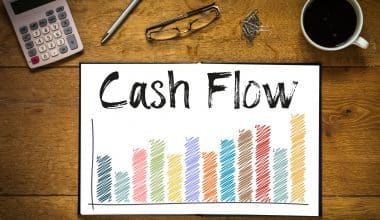Sammy issues a $1200 check to his plumber, not realizing that he had only $1000 left in his account. This leaves his bank with two options: cover the transaction and charge him a paid NSF fee, or return his check and charge him a returned item fee. What if Sammy signed up for automatic payment of his utility bills? Well, the payment can be returned using the ACH system in the case of insufficient funds.
What is an NSF Fee?
NSF stands for “non-sufficient funds.” It refers to the state of a checking account that doesn’t have enough funds to cover its transactions. When a customer issues a check that exceeds the amount in his checking account, the bank will stamp the check with “NSF,” indicating insufficient funds. The bank either pays the transaction or returns the check. The latter case is often termed “bouncing of the check.” In both cases, the bank issues a charge against the account holder. This charge is known as the NSF fee. It comes in form of a returned item fee, or a paid NSF fee.
Returned Item NSF Fee
A returned item NSF fee is charged when your bank denies your transaction or returns your check. As explained above, this often occurs as a result of insufficient funds to cover the transaction. This fee is also known as a bounced check. This fee always results when you do not have overdraft protection. One disadvantage of returned item fee is that it can incur third party charges.
It is important to note that a returned item NSF fee is quite different from an overdraft fee. A returned item fee is charged when a check is returned unpaid. In contrast, an overdraft fee is charged when the bank approves the transaction against an insufficient balance, which results in a negative account balance.
You can avoid the returned item fee. Firstly, ensure you have enough funds in your account to cover your transactions. Furthermore, you can sign up for overdraft protection through your bank. This way, your bank can proceed to pay your transactions even if you have insufficient funds. However, this second option also comes with a fee.
Read Also: Insufficient Funds: A Definitive 2023 guide {updated}
Paid NSF Fee
A paid NSF fee is charged, when there are insufficient funds to cover a transaction, but the bank pays it anyway. This often occurs when the customer has overdraft protection. If the customer has a second account, the bank overdraws from the account to complete the transaction.
The amount charged for a paid NSF is almost the same as for a returned item. The major advantage of the paid NSF over the returned item is that the returned item may incur third-party charges.
Let’s say that Sammy wants to pay his utility bills but doesn’t have enough funds in his account. If he does not have overdraft protection, the bank will deny his transaction and charge him a returned item fee. The utility company will, in turn, charge him a fee for the returned payment. However, if Sammy signs for overdraft protection, the bank will cover his transaction and charge him a paid fee. That way, he won’t have to pay the utility company again.
ACH NSF Fee
Some transactions enable digital payments to be drawn from banks or credit unions. The accounts may have funds insufficient for the transaction. In this case, the bank will deny the payment and return it to the owner of the account through the ACH system. Consequently, the bank will charge the payer an ACH NSF fee.
To explain how this works, let’s say a customer sets up automatic payments for his monthly utility bills. The utility company processes these bills through the ACH system and debits them from the customer’s checking account. If the amount in the account is insufficient for the transaction, the bank will deny the processor’s order to debit the account. The processor then transmits the information about the payment denial to the utility company that initiated the payment request. Consequently, the bank will charge the customer a returned item fee. In addition to this ACH NSF fee, the utility company will also charge him a fee for the returned item.
An ACH overdraft fee occurs when an ACH debit creates a negative balance in the checking account. As you already know, a bank will not allow ACH transactions to create a negative balance and will deny payment if the customer did not sign up for overdraft protection. While ACH overdraft fees and ACH NSF fees usually are similar, having overdraft protection may avoid the inconvenience and negative ramifications of NSF returns
How do I Avoid NSF Fee Charges?
You can avoid NSF fees in a lot of ways. To avoid these charges, avoid writing a check or making payments that exceed your current account. This can happen if you are expecting an imminent inflow of cash to your account. Always keep track of your transactions and request your account statement periodically. This will help you monitor your account balance. In addition, you can work with your bank to set up low-balance alerts. Your bank will send a letter or text to notify you when the funds in your account drop below a stipulated amount. This will also help you to monitor your balance.
Furthermore, if you have more than one account with your bank, you can link them together. This way, your bank can overdraw from one account to the other to cover transactions. Some banks also offer overdraft protection programs. This will enable the bank to cover your transactions if you have insufficient funds, for a fee. However, this is not a wonderful option, as the bank may decide not to pay a particular transaction. The best thing to do is to review your account on a regular basis.
What is an Overdraft Fee?
Overdraft protection is an agreement between a customer and a bank to cover overdrafts on a checking account. This service enables the bank to cover an insufficient funds transaction, and it typically involves a fee. This fee is known as the overdraft fee. However, some banks restrict overdraft protection to a particular amount. This means that there is a limit to the amount that a bank can cover in the event of insufficient funds. No legal platform requires banks to offer any overdraft protection programs, and even when they do, they may decide to pay or not pay a particular overdraft transaction. You should review your deposit account agreement and check with your bank to find out the terms and conditions of any overdraft protection programs that it may offer.
How is an Overdraft Fee Different from an NSF Fee?
Banks charge an overdraft fee when you use Overdraft Privilege (ODP). ODP will pay for items if your checking account does not have sufficient funds to cover them. This often results in a negative account. A nonsufficient funds (NSF) fee, or NSF item fee, is charged when your bank overdraws your account and returns the item unpaid.
There are a few reasons why your bank will charge you an NSF fee. You may not have enough funds to cover your transaction, and if you don’t sign up for ODP, you’ll be charged an NSF fee. Your bank will also charge you an NSF fee if you exceed your transfer limits or the negative transaction limit. The fee charged for NSF is about $38. The fee charged for overdrafts depends on the amount covered by the bank. The descriptions on your statement will be specific to the item. Examples of fee descriptions might show to the right of a transaction on your statement.
How much is an NSF Fee?
For nonsufficient funds and overdrafts, many banks charge the same or similar amounts. There is no standard NSF fee, and it can cost anywhere from $10 to $35, depending on the financial institution.
Are NSF Fees Legal?
Yes. If a financial institution discovers that there are insufficient funds to cover a transaction, they may assess a fee. Each bank sets its own rates and fees; while the federal government doesn’t regulate this, most states cap the amount of money banks can charge in fees.
Are NSF Fees Refundable?
NSF fees are not required to be refunded or waived by banks. It is always worth a shot to inquire as to whether or not your bank will reverse an NSF charge. In fact, there are fee-waiver programs at some schools.
How do I Stop NSF Fees?
Already charged insufficient funds fees? If a failed payment has already been attempted, you should contact the merchant as soon as possible to discuss alternative payment options, such as using a different checking account, transferring money from a savings account, or setting up a payment plan. For help getting your money back from a variety of bank fees, use a service like Harvest Platform.
Does NSF Hurt Credit?
Banks do not report NSF transactions to consumer reporting agencies like Equifax, TransUnion, and Experian, so NSF fees have no direct impact on a consumer’s credit or credit score. A customer’s credit score could take a hit if a payment on a credit card or loan is delayed because of a bounced check.
How many NSF fees Can a Bank Charge in One Day?
There are some banks that will charge you up to 12 overdraft fees in one day, but this is the exception rather than the rule.
How Long Does it Take for an NSF to be Returned?
Most non-sufficient funds (NSF) checks are returned a few days after deposit and are therefore sometimes referred to as bounced checks or bad checks. Banks typically charge businesses a returned check fee of $10 to $35, sometimes more.
Conclusion
Banks leverage on insufficient funds to generate profit. NSF fees are a legal medium for generating these profits. But then, nobody likes it when his bank debits him unnecessarily, especially when it occurs a number of times! Interestingly, you can avoid it. It is important to ensure you have enough funds to carry out a transaction. But sometimes, you can’t be so sure of your account statement. In that case, you should sign up for overdraft protection with your bank.






